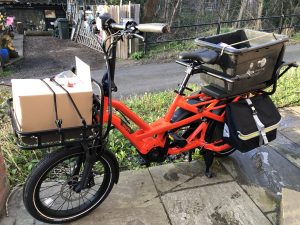Changing lanes for Sustainability
 I was still at school when the UK’s compulsory seat belt law came in. I can still remember one of my teachers harrumphing about it:
I was still at school when the UK’s compulsory seat belt law came in. I can still remember one of my teachers harrumphing about it:
I’ll never wear a seat belt. If I’m in an accident I’d rather be thrown clear rather than burn to death in the car.
To him, this was a perfectly logical position, but even to us schoolkids it was utterly ludicrous and we could barely suppress our giggles. But it illustrates an important point about change – our brains will persuade us of all sorts of nonsense if we don’t fancy what we’ve been asked to do.
Changes to motoring rules seem to be particularly prone to kicking up a storm of catastrophic claims, twisted statistics and bizarre conspiracy theories. The person who postulated that the serious allegations of abuse made against Russell Brand over the weekend were a deliberate distraction from the introduction of default 20mph schemes in residential streets in Wales was displaying a particularly convoluted feat of mental gymnastics.
But outside tinfoil hat circles, there’s plenty of plain stupid “common sense” spouted by otherwise intelligent people. When I suggest we need to increase cycling rates, I’m often told “you can’t fit a wardrobe on a bike”, ignoring the fact you can’t fit a wardrobe in an average family car either. If you want to move a wardrobe, hire a van – simple! “Why do cyclists need cycle lanes?” I’m asked by people who clearly have never asked “Why do pedestrians need footpaths?”
These are the ways you can make change happen (illustrated with traffic examples):
- Compulsion: from the seat belt ban to pedestrianisation of town centres, sometimes the authorities need to force through change. Short term rage usually gives way to acceptance – success and failure often depend on where we are on the electoral cycle.
- Carrot and stick measures: the various clean air measures being implemented around the UK penalise those with dirty vehicles and subsidise the change to cleaner vehicles. Low traffic neighbourhoods promote active travel over motoring.
- Facilitating the alternative: make what you want to happen safe and easy – providing cycle lanes, transit lanes and safe walking routes are a precursor to sustainable travel.
- Demonstrating the alternative: part of the reason why I sold my car in favour of cargo bike/public transport/car club was to demonstrate to others that car ownership is not necessary. I have loads of casual conversations about the cargo bike and people are fascinated by the car club model (honest!). I’ve given test rides to two families who are now cargo bike owners.
- Ask people what they should do: part of the reason why our local traffic restrictions haven’t caused the controversy seen elsewhere is the local community asked for them. People don’t like feeling they are being forced into change, even if they know it is necessary. But if they want to change, everything becomes really easy.

